Claymore is a Pretty Good Anime and Manga
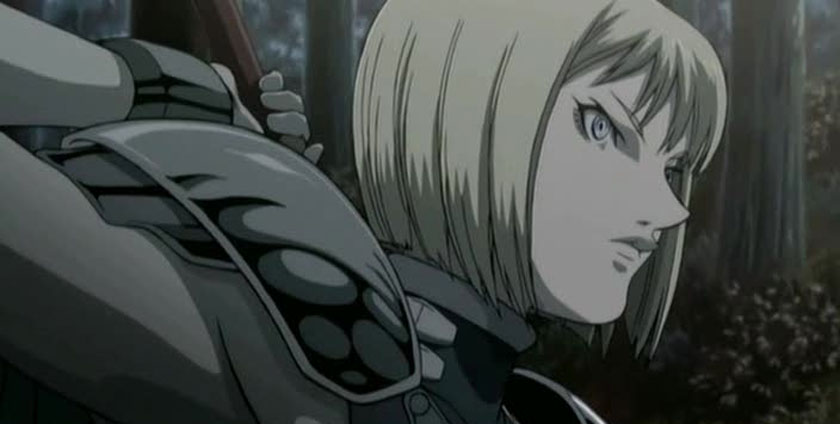
It’s a mystery why it has taken so long for me to watch and read Claymore. I’ve been hunting for high fantasy anime that can scratch the same itch as the original Record of Lodoss War OVAs for years, and while Claymore is more shounen-fighting style dark fantasy, it leans closer to my craving than most Isekai or video game influenced anime currently being produced. Perhaps I missed the day my university’s anime club had played the introductory four episodes, assuming they had shown it at all, but this show has only been on the fringes of my anime radar. I’d occasionally see it on streaming services, but for some reason I never gave it a watch.
However, as much as I enjoyed finally watching the anime and reading the manga, I certainly found the earliest arcs of the narrative more enjoyable than the latter. This has less to do with the quality of the characters or plot and more to do with the prominence of that shounen-fighting sub-genre in which this story occupies. In fact, I have Claymore to thank for helping me understand why I have lost interest in arguably the most popular anime and manga genre: shounen-fighting stories are exhausting.
If you’re not quite certain what I mean by “shounen-fighting”, I’m referring to works such as Dragon Ball Z, Naruto, Bleach, and My Hero Academia. Much like a Kung-Fu flick, the primary draw to these works are the fights. Unfortunately, the pace of these stories is to primarily focus on fights or training arcs with barely any reprieve. All plot and character development occurs while fists and blades are clashing, or while protagonists are endeavoring to develop some new technique or surpass the current limit of their power. Once one phase ends, the next must begin. The bulk of all narrative is in the fighting, posturing, or training. If you’re lucky, there’s an episode where the characters visit a ramen shop or something, though you’re more likely to just get a beach episode these days.
By the time I was in College and Naruto was the new hotness, I found this formula to be tiresome. Now that I’m an adult, I find it outright exhausting and the one thing holding Claymore back from “surpassing its limit”.
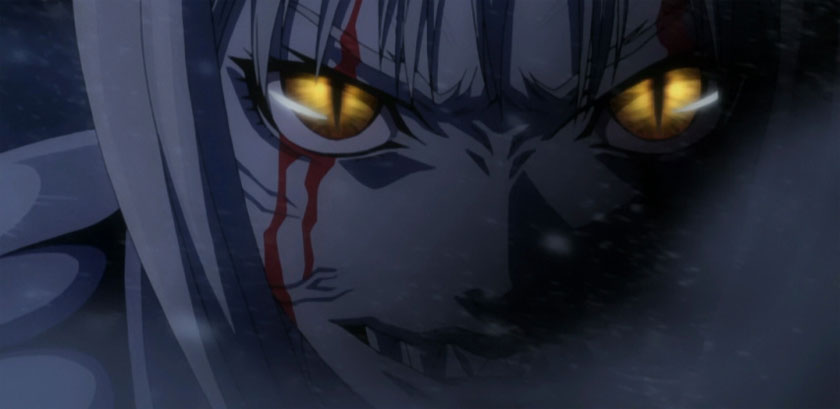
I must first commend Claymore for having a degree of restraint compared to its peers. There is a “state” or “condition” in which some of our protagonists find themselves, one that could easily have been the manga’s own brand of the “super saiyan” from Dragon Ball Z. However, this state has multiple drawbacks that disincentivize our protagonists from reaching or achieving this state, occasionally resulting in a weighing of risk versus reward for daring to dance the line to this powerful limit. There is never a moment where this limit stops being a threat through the strength of sheer willpower or some other made up rule to justify our protagonist’s superficial superiority. It remains a persistent danger throughout the story’s duration, though the precise rules and logic are wishy-washy and feel nebulous in their execution.
It also does not prevent the all too familiar escalation of power, where every foe is some unimaginable threat that can never be defeated. Oh, wait, nevermind. They’ve just been defeated after all, and everyone stands around slack-jawed at the new, even more powerful threat that surely cannot be defeated. The escalated strength of characters is often represented as intense speed that cannot be tracked by the naked eye, and therefore fights go from having actual choreography to just being an indistinct blur of slashes clashing in the air. This is somewhat less of a problem in the manga as time progresses, as the eye can speed through the action just as hastily as the characters are moving and the panels try to emphasize more specific actions. The downside is that the exhaustion weighs heavy as the final third of the manga consists of nothing but fights, one after the next, never or rarely taking a break.
It’s a testament to the skill of the author Norihiro Yagi that, amidst all of these constant battles, the varied personalities of his characters still shine through. While you could facetiously refer to Claymore as “Berserk but with waifus”, its diverse cast of women are not such exaggerated stereotypes as most anime lean for. In fact, most of the characters are marked by a degree of stoicism, their differences illustrated by their spoken dialogue and the philosophies they express. While not every character is so subdued – in fact, the less subdued certainly stand out more prominently because they are more expressive and emotional – it reveals a more realistic subtlety that defines each character as an individual.
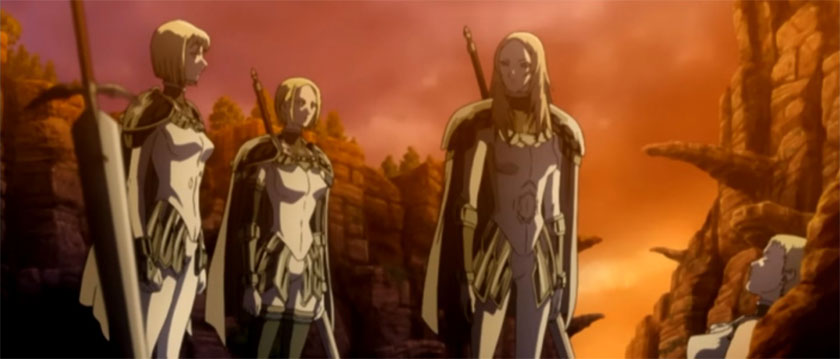
Which is why it’s a shame that there’s so little interaction between the characters outside of combat or under the threat of combat. It would be nice to see some of the cast interacting with one another outside of a hunt for Yoma, the demonic creatures that plague the land. Perhaps the characters could be deepened by demonstrating each one’s hunting and fishing methodology, whether they use their powers for the task or perform them as a regular human might. Given the warrior women – referred to by the human populace as Claymores due to the heavy blade they wield – have little need to eat more than a few bites every few days, the very fact that they engage in eating more than necessary or activities such as hunting or fishing could say something of their personality or their desire to remain rooted in their humanity. There are a handful of moments in which we see such things, but they are very brief asides snuck in between fights, training, or plot exposition.
Ultimately Claymore is a plot-driven show rather than character driven. Any and all conversation must move the story forward, leaving little time to indulge in the quirks, depths, and diversity of the cast.
Perhaps this is why my favorite arc involves Teresa of the Faint Smile, a character that barely features in the story and yet whose presence resonates throughout its entirety. The action is a minor footnote throughout its duration as we get a sense of who she is and what her values are, each chapter or episode building to a momentous clash with former comrades that is as much ideological as it is physical. The show and manga are never the same after Teresa of the Faint Smile, for better and worse.
Regardless of my gripes, Norihiro Yagi’s plot-driven story-telling remains compelling. If the action, despite being so prominent, is the weakest part of the story and the characters are not given enough attention to achieve their full potential, then it is the plot and its structure that propels the viewer or reader forward episode after episode, chapter after chapter.
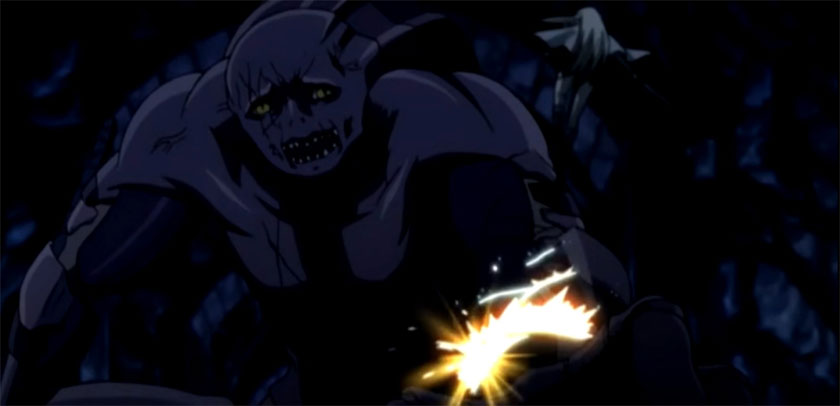
It is why I have been so vague on detail in this entire write-up. To try and illustrate what the story does best is to give too much away. It truly is a plot better experienced blind, allowing each revelation, each death, and each moment of escalation to be a shock or invigorating burst of hype. Every event and character is an introduction to a concept or idea so that, as the plot progresses, they can merge or modify in a fashion that not only feels consistent with itself, but satisfying. A character reappearing with a surprise trait hinted at or explained a dozen chapters ago is satisfying, like seeing more and more pieces of a puzzle being placed together until a whole picture begins to take form. Each development snaps together like individual LEGO bricks, assembling a figure worth a thousand and more words of narrative whose resolution ties all loose ends together nice and tight.
However, I noted that Claymore is a pretty good anime and manga. I did not say it was great, or excellent, or a masterpiece, and I have the feeling that, in a month or two, I’ll have forgotten the majority of its details and moments that I once found so hype or surprising.
Part of this is due to the binge. I got sucked into Claymore in a way that rarely happens to me these days. You could even say it was nostalgic, reminiscent of the days in which I was first discovering anime. The plot firmly hooked and drew me in chapter after chapter, but I have seen too many shounen-fighting anime and seen the overdone tropes of power escalation so often that this binge left me mentally wiped out. What it does well, it does really well, but that adherence to certain tropes prevents it from measuring up to the most memorable greats.
Claymore remains easier to recommend than most other anime of a similar type despite this, and in part because of how it handles the power creep and its characters. While Clare is the protagonist, for example, there are huge chunks of the narrative in which she is not even present. This is truly an ensemble cast and while she is our center, she is just one piece of the greater world. In an era where anime, manga, and light-novels are drowning in protagonists written to be the absolute greatest in the world, it’s a relief to have a narrative where the rest of the cast is just as important, valuable, and, in their own way, strong. Clare is strong, but there are others who are stronger. Even if Clare has more power, she has less discipline and experience. Moreover, there are greater forces than her at work, and therefore she is not the sole hinge upon which the entire world turns.
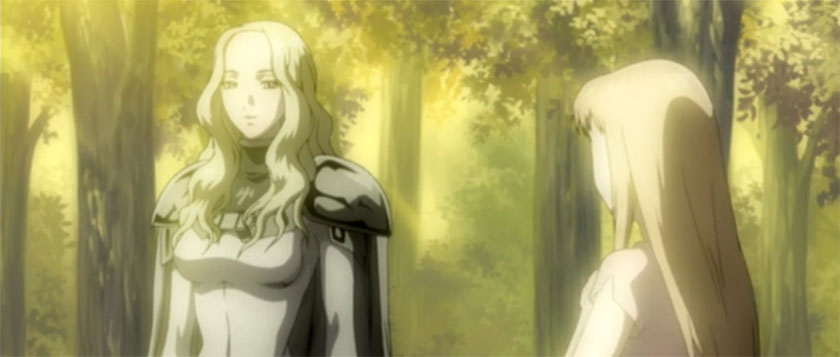
Admittedly, I was certain at first that Claymore was a “seinen”, meaning its target audience was primarily older men. After having watched the anime and read the manga in full, as well as discovering it had been published in Shounen Jump, I’d say Claymore feels like a seinen trapped in a shounen-fighting narrative. A shame, since it could have been so much better if it wasn’t dragged down by the relentless pace of its many fights.
If you do choose to investigate Claymore yourself, keep in mind the anime is only about one-third of the total narrative and deviates in its final two or three episodes in order to provide some degree of closure. If it followed the manga it would conclude on a far greater cliffhanger, one that would have been unsatisfying since there would have been no season two. The show exists as an advertisement for the manga, which would not conclude until 2014, seven years after the anime aired. It is unlikely there will be a season two.
There is one deviation from the manga in those final episodes that I think is a good change, but otherwise, don’t go into the anime expecting a definitive conclusion. Use it to instead determine if you’re interested enough to pursue the manga. Both are a decent use of your time, especially if you’re looking for something more reminiscent of the 80’s and 90’s era of anime.


